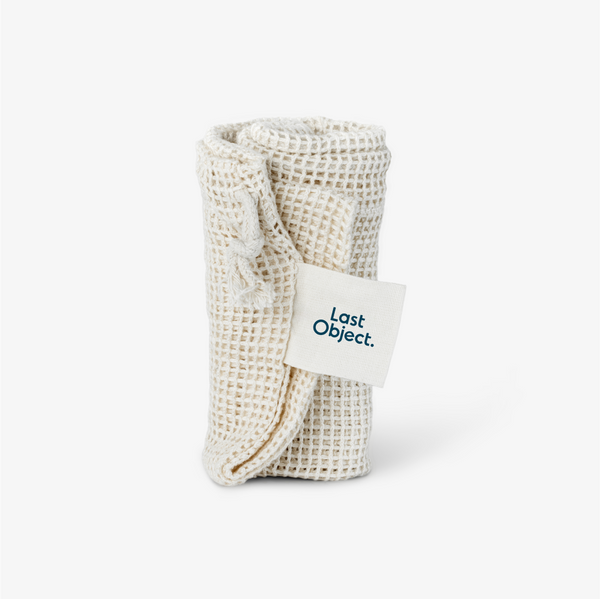Sustainability 101
What Is Bokashi Composting & How It Works: A Guide
novembre 11, 2021
Composting is an effective and completely natural way of getting rid of kitchen food scraps whilst doing wonders for the earth. There are many different methods of composting but one of the most effective ones is Bokashi composting. What normally takes many other methods months to break down and turn into nutrient-dense compost, only takes Bokashi composting between 2 - 4 weeks. You can then easily add the compost to your garden or allotment to develop a nutrient rich soil that your plants will love.
Read on to learn more about Bokashi composting and how the process works.

Bokashi composting is a process of fermentation that quickly converts food waste into highly productive soil that plants will thrive in. It is an anaerobic process of fermentation where oxygen and moisture are kept to a minimum. This leads to a faster breakdown of food scraps through pickling rather than decaying like other conventional composting methods.
For this reason it’s considered a ‘pre-compost’ since the food scraps are not completely decayed. Nonetheless, once applied to your garden, it creates a nutrient-rich soil that plants benefit from immensely.
Bokashi composting is a trusted approach that many gardeners use to build healthy, fertile soil.

The term Bokashi is a Japanese word that means ‘fermented organic matter’. Bokashi can be any organic grass or grain-like substance such as rice, bran, wheat mill run, sawdust or even dried leaves.
Bokashi composting works by inoculating different types of Bokashi mediums with specific beneficial microbes that help bacteria to flourish exponentially within the anaerobic environment. Other composting methods that use garden waste like cut grass, use an aerobic environment where oxygen is plentiful. This results in faster biodegradation, translating to decay and nutrient loss.
Alternatively, bacteria yeast strains found in Bokashi such as Saccharomyces, Lactobacillus & Rhodopseudomonas are active organisms that are generally found in yogurt or silage and are ideal for breaking down or pickling food scraps. This creates a nutrient-dense compost that’s great for plant life.
Bokashi Pros
Bokashi Cons
Useful Tips
Here are some useful tips to keep in mind when starting out with Bokashi composting.

Now that you’re well versed on the main requirements, it’s time to start creating your Bokashi compost.
Step 1
Take your Bokashi bucket and place the grate on the ledge near the bottom of the bucket with the knob facing upright. Just ensure the tap is in the off position. You can drain out that ‘Bokashi liquid gold’ from here later.
Step 2
Gather your food scraps, place them in the bucket, and sprinkle a handful of Bokashi One Mix over every layer of the waste. As a rule of thumb, use approximately 1 tablespoon of mix for every cup of waste. If you’re adding any foods that are high in protein such as eggs, fish, meat, and cheese, add an extra tablespoon of Bokashi One Mix because they usually take longer to break down.
Step 3
Once you have added your food waste for that day, close the lid and ensure it’s completely sealed over. This will eliminate any further oxygen entering.
Step 4
Over a few days, the food waste will begin to pickle and deteriorate, which will result in liquid dripping to the bottom of the bucket. Drain out the liquid using the tap at the base. You can then use it as a spray for fertilizer if you wish.
Step 5
Repeat the layering process of adding food scraps along with Bokashi One Mix until the bucket is full.
Step 6
Once full, the bucket is ready for burying in your garden as compost.
Step 7
If you have two Bokashi One buckets, you can begin the process again in your second bucket, which will allow the contents of the first bucket to continue fermenting. Just ensure you keep draining both buckets of the Bokashi juice regularly.
Step 8
As your Bokashi compost is still fermenting and pickling, it is quite acidic and can burn plants if they come in contact with it right away. So when burying it, make sure you dig a hole or trench that is double the height and width of your Bokashi bucket.
Step 9
Empty the contents of the bucket into the trench and cover over with around 25cm of soil. The waste will continue to decompose and air will begin to enter its environment where the nutrients will be dispersed into the soil.
Step 10
After you have buried your Bokashi compost, give your Bokashi One bucket a deep clean ready for the next batch of food scraps.
Step 11
After 3-4 weeks once the acidity of the soil has dropped and the PH has levelled out you can start planting the soil.
It’s an easy, affordable way of creating nutritious soil for plant life. What’s more, the Bokashi juice collected at the bottom of the bucket is full of good bacteria that’s ideal for spraying over the foliage of your plants. It also makes an excellent drain cleaner that’s great for combating odors or fungus.
If you are a gardener, give Bokashi composting a go. Over the period of 8 weeks (4 weeks for fermentation & 4 weeks to introduce plant life) you’ll start to see your garden turn into a vibrant palette of healthy plants.
Read on to learn more about Bokashi composting and how the process works.
What Is Bokashi Composting?

Bokashi composting is a process of fermentation that quickly converts food waste into highly productive soil that plants will thrive in. It is an anaerobic process of fermentation where oxygen and moisture are kept to a minimum. This leads to a faster breakdown of food scraps through pickling rather than decaying like other conventional composting methods.
For this reason it’s considered a ‘pre-compost’ since the food scraps are not completely decayed. Nonetheless, once applied to your garden, it creates a nutrient-rich soil that plants benefit from immensely.
Bokashi composting is a trusted approach that many gardeners use to build healthy, fertile soil.
How Does Bokashi Composting Work?

The term Bokashi is a Japanese word that means ‘fermented organic matter’. Bokashi can be any organic grass or grain-like substance such as rice, bran, wheat mill run, sawdust or even dried leaves.
Bokashi composting works by inoculating different types of Bokashi mediums with specific beneficial microbes that help bacteria to flourish exponentially within the anaerobic environment. Other composting methods that use garden waste like cut grass, use an aerobic environment where oxygen is plentiful. This results in faster biodegradation, translating to decay and nutrient loss.
Alternatively, bacteria yeast strains found in Bokashi such as Saccharomyces, Lactobacillus & Rhodopseudomonas are active organisms that are generally found in yogurt or silage and are ideal for breaking down or pickling food scraps. This creates a nutrient-dense compost that’s great for plant life.
Bokashi Pros
- Simple to set up.
- Nutrient & nitrogen-dense organic matter.
- Can be done indoors.
- Compost can be created within 2 - 4 weeks.
- Low carbon dioxide emissions.
- Bokashi liquid by-product is also a great fertilizer and cleaner.
Bokashi Cons
- Bokashi composting buckets are small in size, which limits quantities.
- Ongoing cost of buying Bokashi bran bags.
How To Start With Bokashi Composting
To get started with Bokashi composting, there are a few items you will need.This includes:- A Bokashi bucket/ bin (but you can also use a kitty litter bucket or an old plastic pickle bucket).
- An anaerobic inoculant like Bokashi Bran to decompose the food scraps.
- Your kitchen scraps, including meat, dairy, oil, fruits or vegetables.
Useful Tips
Here are some useful tips to keep in mind when starting out with Bokashi composting.
- If you are repurposing an old bucket, it’s a good idea to create holes in the bottom for drainage because the decomposition of the food will develop liquid. This liquid is also a great fertilizer and drain cleaner.
If you plan to use bones in your Bokashi compost mix, make sure they are broken down into smaller chunks. Failure to do so means they’ll take longer to ferment and turn to a mush-like quality.
- Don’t add any rotten food with blue, green or black mould growing on it. Doing so can cause an imbalance in the fermentation process and result in you throwing away that bucket of scraps out and starting over again.
Steps of Bokashi Composting

Now that you’re well versed on the main requirements, it’s time to start creating your Bokashi compost.
Step 1
Take your Bokashi bucket and place the grate on the ledge near the bottom of the bucket with the knob facing upright. Just ensure the tap is in the off position. You can drain out that ‘Bokashi liquid gold’ from here later.
Step 2
Gather your food scraps, place them in the bucket, and sprinkle a handful of Bokashi One Mix over every layer of the waste. As a rule of thumb, use approximately 1 tablespoon of mix for every cup of waste. If you’re adding any foods that are high in protein such as eggs, fish, meat, and cheese, add an extra tablespoon of Bokashi One Mix because they usually take longer to break down.
Step 3
Once you have added your food waste for that day, close the lid and ensure it’s completely sealed over. This will eliminate any further oxygen entering.
Step 4
Over a few days, the food waste will begin to pickle and deteriorate, which will result in liquid dripping to the bottom of the bucket. Drain out the liquid using the tap at the base. You can then use it as a spray for fertilizer if you wish.
Step 5
Repeat the layering process of adding food scraps along with Bokashi One Mix until the bucket is full.
Step 6
Once full, the bucket is ready for burying in your garden as compost.
Step 7
If you have two Bokashi One buckets, you can begin the process again in your second bucket, which will allow the contents of the first bucket to continue fermenting. Just ensure you keep draining both buckets of the Bokashi juice regularly.
Step 8
As your Bokashi compost is still fermenting and pickling, it is quite acidic and can burn plants if they come in contact with it right away. So when burying it, make sure you dig a hole or trench that is double the height and width of your Bokashi bucket.
Step 9
Empty the contents of the bucket into the trench and cover over with around 25cm of soil. The waste will continue to decompose and air will begin to enter its environment where the nutrients will be dispersed into the soil.
Step 10
After you have buried your Bokashi compost, give your Bokashi One bucket a deep clean ready for the next batch of food scraps.
Step 11
After 3-4 weeks once the acidity of the soil has dropped and the PH has levelled out you can start planting the soil.
Bokashi Composting Is Good For Your Garden & The Environment
As you can see, Bokashi composting is a great alternative to conventional composting. Not only does it effectively clear your home of food waste, but it also means you're doing your part for the environment by reducing the amount of waste being sent to landfill sites, which also lowers your carbon footprint.It’s an easy, affordable way of creating nutritious soil for plant life. What’s more, the Bokashi juice collected at the bottom of the bucket is full of good bacteria that’s ideal for spraying over the foliage of your plants. It also makes an excellent drain cleaner that’s great for combating odors or fungus.
If you are a gardener, give Bokashi composting a go. Over the period of 8 weeks (4 weeks for fermentation & 4 weeks to introduce plant life) you’ll start to see your garden turn into a vibrant palette of healthy plants.
MORE Sustainability 101 ARTICLES View all ›
Ready to make
the switch?
- Powerful Cleaning
- Dissolves Easily
- Skin-Friendly
- Eco-Friendly
- No Mess















